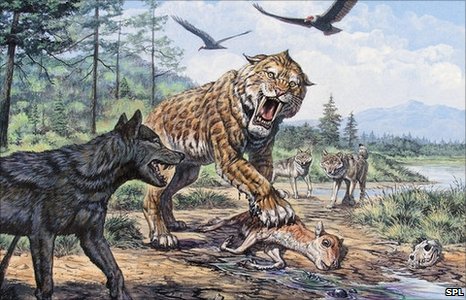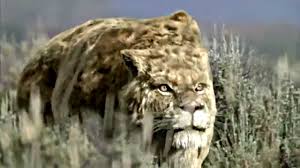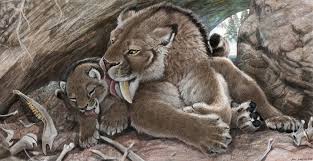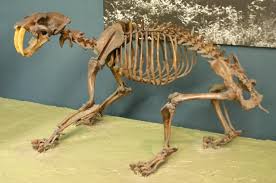 Smilodon
Smilodon
Evolution

Smilodon was around the size of modern big cats, but was more robustly built. It had a reduced lumbar region, high scapula, short tail, and broad limbs with relatively short feet. Smilodon is most famous for its relatively long canine teeth, which are the longest found in the saber-toothed cats. The canines were slender and had fine serrations on the front and back side. The upper incisors were large, sharp, and slanted forwards. Over the years, the Smilodon grows smaller as food becomes scarce which will eventually lead to their extinction.
Hierachy
Smilodon evolved and most commonly lived in North America. When in Pliocene North and South America finally came together and formed a land bridge, Smilodon were a part of the Great American. Exchange: they came to South America from North America and became one of the apex predators there, seemingly driving the terror birds and sparassodonts to extinction. They were top-predators and hunted a number of animals and were usually uncontested.

Hunting

Smilodon was a fierce predator about 3 meters long and 1.05 meters tall. Smilodon species weighed anywhere from 110 to 400kg. Smilodon had relatively short, muscular legs and a short, bobbed tail a bit like that of a modern day Bobcat. Smilodon's front legs were especially powerful and its body was adapted for springing onto prey, but it was not a very fast runner and could not be adapted for chasing after fast running prey like deer. This meant that it relied on stalking prey, but it could hunt some slower animals such as Macrauchenia, Toxodon, some subspecies of Mammoths, and Ground Sloths.
Behavior
Its very unclear how this feline lived and several paleontologists suggested the smilodon was a very territorial animal because of high competition on food and territory. It lived solitary much like leopards and jaguars like our time from same reasons.

Extinction

Not much is known about how Smilodon became extinct. One theory is that Smilodon being an expert at hunting large prey became unable to hunt smaller prey as megafauna started to die out. Another is the introduction of new world diseases combined with the severe climate change caused areas to become inhabitable for Smilodon.